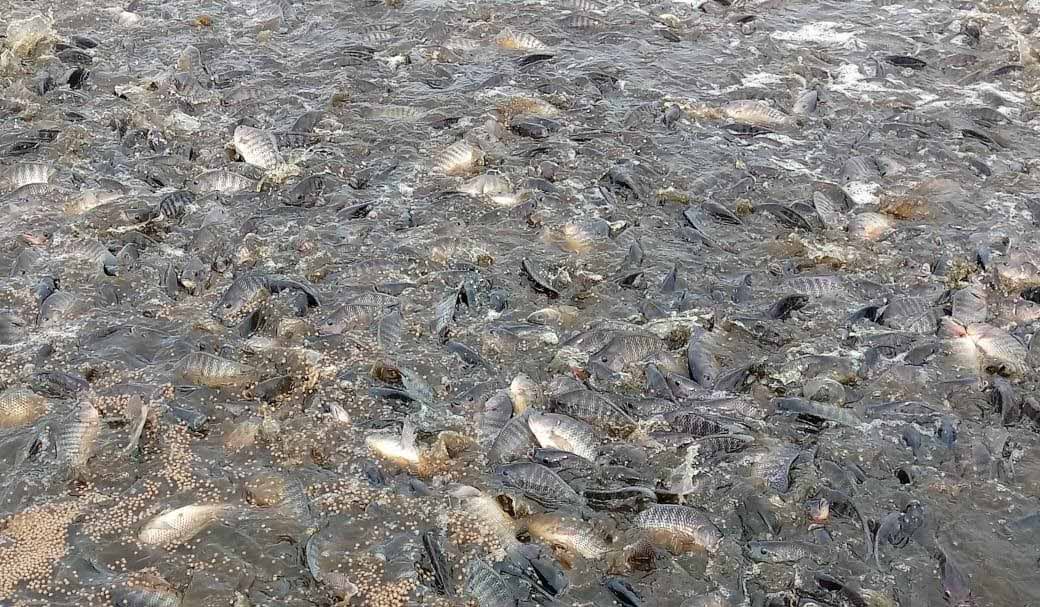
Oxygen dissolved in water is essential for the survival and growth of fish and crustaceans. Just as land animals rely on air to breathe, fish depend on oxygen rich water to perform vital biological functions. Fish absorb oxygen through their gills, supporting critical processes such as digestion, metabolism regulation, and movement.
When oxygen levels drop too low, fish can suffer from oxidative stress, which can stunt growth and, in severe cases, lead to mortality. Insufficient oxygen also impacts the tank environment, degrading water quality and potentially disrupting filtration and biofiltration systems.
What Influences Oxygen Demand in Aquaculture?
- Species being raised
- Biomass and size of the animals
- Water temperature and salinity
- Feeding rate and frequency
- Type of system (for example RAS or flow-through)
While these variables are interrelated, one parameter stands out as a reliable indicator of oxygen demand: the quantity of feed.
Why? Because feed quantity reflects all of the factors above. Nutritional requirements are well documented for most fish and shrimp species, and feeding tables are typically adapted to water temperature and fish size. In essence, feed quantity is the best representation of an animal’s metabolic activity.
Feed-to-Oxygen Ratio

A commonly used rule of thumb in aquaculture is that 1 kg of feed requires around 350 g of oxygen for the fish or shrimp to metabolize it.
So, if you feed 10 kg of feed in a tank per day, the stock will consume approximately 3.5 kg of oxygen daily.
Keep in mind that oxygen consumption usually peaks shortly after feeding. However, when using automatic feeders that distribute smaller meals throughout the day, oxygen demand tends to smooth out, reducing peaks and stabilizing oxygen levels.
The Special Case of RAS (Recirculating Aquaculture Systems)
RAS are closed-loop systems where water is continuously filtered and reused, making them highly water-efficient and suitable for high-density farming. However, because the water remains in the system longer, biological activity increases, especially due to bacteriological activity.
In RAS, the total oxygen consumption per kilogram of feed is estimated to be about 1 kg. This includes:
- 350 g for fish or shrimp respiration
- 650 g for microbial respiration in the biofilter
This increased demand is mainly due to the nitrifying bacteria in the biofilter, which oxidize ammonia and other waste products. Most RAS systems use Moving Bed Biofilm Reactors (MBBRs), where aeration is used for the movement of the filter while also supply ing it with oxygen.
Example: Oxygen Demand Calculation in a RAS Tilapia Farm

Let’s consider a RAS tilapia farm with the following setup:
- 10 tanks, each 50 m³
- Total biomass: 25 tons of 25 g juvenile tilapia
- Stocking density: 50 kg/m³
- Water temperature: 25°C
- Feeding rate: 3% of biomass per day → 750 kg of feed per day
Oxygen Requirement Breakdown:
- Fish respiration: 35% → 262.5 kg/day
- Biofilter bacteria: 65% → 487.5 kg/day
- Total system oxygen demand: 750 kg/day
Biofilter Aeration Requirement
Aeration in the biofilter supplies the 487.5 kg of oxygen needed. Given that:
- Air contains ~20% oxygen
- Dissolution efficiency of aeration in MBBR is ~5%
You’ll need approximately:
41,666 m³ of air per day, or 1,736 m³/hour
(We'll go into the details of biofilter sizing and operation in a future article.)
Tank Oxygenation
Assuming the water exiting the biofilter is fully saturated with oxygen (100%), the fish will need to be with enough oxygen to cover their consumption of 262.5 kg/day, or about 11 kg/hour.
Oxygen Supply in Normal Operation
Let’s say oxygen is introduced using a low head oxygenator with an 80% dissolution rate:
- Required oxygen input = 11 kg/hour ÷ 0.80 = 13.75 kg/hour
Oxygen Supply in Emergency Mode
Oxygen is introduced by ceramic diffusers, with a dissolution rate of 20%, in the event of a power failure
Required oxygen input = 11 kg/hour ÷ 0.20 = 55 kg/hour
In Summary
- The feed quantity is a reliable indicator of oxygen demand.
- 1 kg of feed ≈ 350 g of oxygen in open systems; up to 1 kg of oxygen in RAS due to bacterial activity.
- Properly sizing oxygen supply systems—including emergency backups—is key to stable operation.
- Aeration systems in the biofilter must be sized correctly to handle microbial demand.

